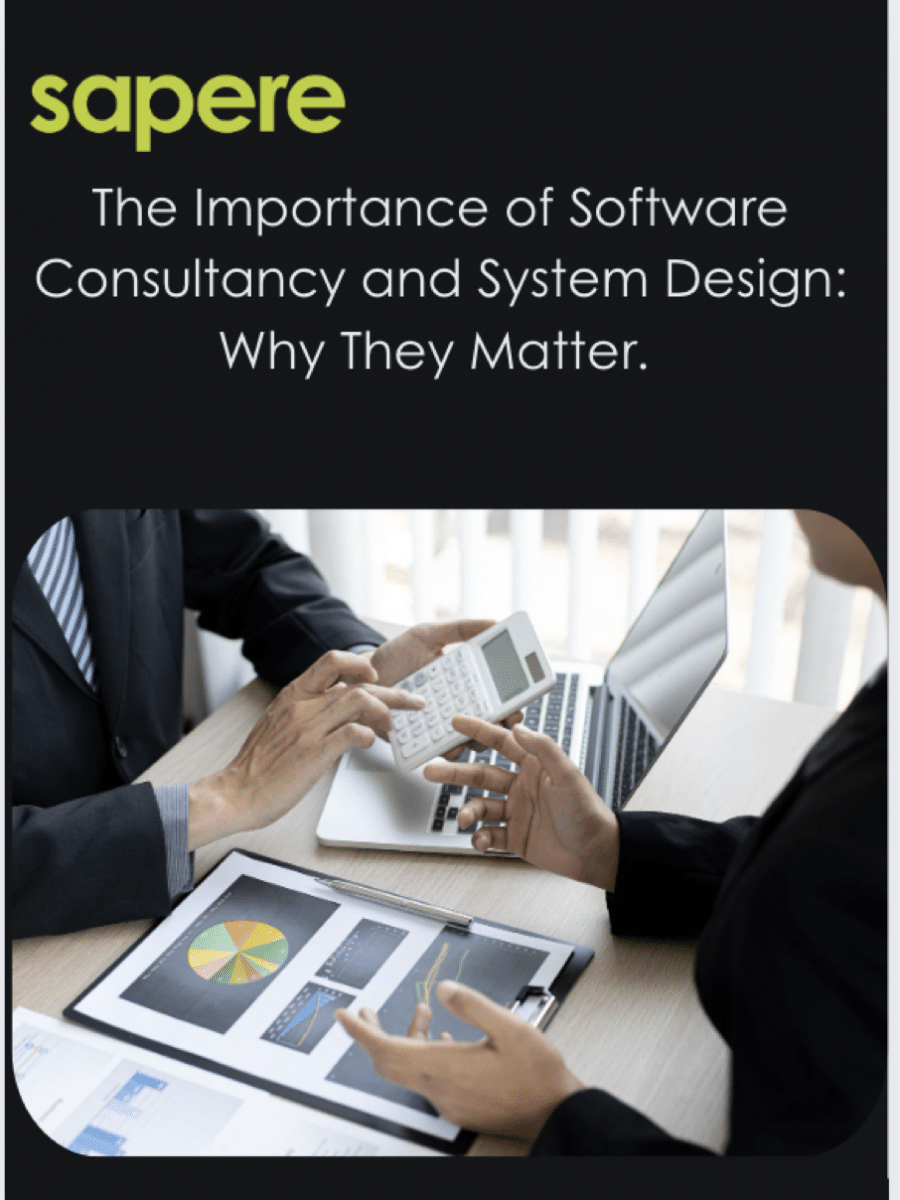
Developing software is more than just writing code, it’s about creating solutions that solve real problems, grow with the business, and deliver long-term value. Software consultancy and system design are key to ensuring the right technology is chosen, that a system is built efficiently, and the final product meets the business and user needs.
In this post, we’ll explore why these services are crucial, the benefits they offer, and the consequences of skipping them — using an example from the facilities management industry.
Why Software Consultancy and System Design Are Essential
- Expert Guidance: Software consultancy brings expert advice to help businesses navigate complex decisions, choose the right technology, and align their software with their strategic goals. This ensures a more successful, future-proof solution.
- Clear Planning: System design focuses on creating a detailed plan or proposal for how the software will work. It outlines the system’s architecture, how components will interact, and ensures it will be agile, secure, and easy to maintain.
- Efficiency and Scalability: A strong system design ensures that the solution can grow with the business. Without a clear plan in place, businesses risk building a system that’s difficult to scale or adapt as needs evolve.
Benefits of Software Consultancy and System Design
- Reduced Risk: By adopting a consultative approach early in the process, businesses can avoid costly mistakes and select the right technology and features for their needs.
- Cost Savings: Proper system design prevents expensive amendments later. With a clear design in place, development is more efficient, and maintenance becomes simpler and more cost-effective.
- Better User Experience: A system designed with both functionality and user experience in mind will ensure that end-users can easily interact with the software, improving overall satisfaction and adoption.
- Scalability: A well-designed system can easily be expanded or modified as the business grows, preventing bottlenecks and future headaches as new features or capabilities are needed.
What Happens If You Skip Software Consultancy and System Design?
Neglecting to invest in consultancy and system design can lead to several issues:
- Wrong Technology Choices: Without expert guidance, you may choose a platform or tools that aren’t a good fit for your business needs, leading to performance issues, security risks, or limitations.
- Increased Complexity: Without a clear design, the system can become overly complex, hard to maintain, and prone to failure as new features are added.
- Higher Costs: Development delays, unexpected problems, and the need for costly fixes will increase costs over time if the system isn’t properly designed from the outset.
- Poor User Experience: If the system isn’t designed with user needs in mind, the result can be a frustrating experience for end-users, leading to lower adoption rates and decreased productivity.
Example: The Facilities Management Industry
Let’s consider a facilities management company that wants to implement a new software system to streamline maintenance scheduling, track assets, and manage service requests. Without appropriate software consultancy and system design, the company might rush into using an off-the-shelf solution or a basic system that doesn’t address all their unique needs.
Here’s what could go wrong:
- Inefficient Scheduling and Coordination: The system may not integrate well with the company’s existing resources or service teams, resulting in overlapping schedules, missed maintenance tasks, or delays in responding to urgent requests.
- Lack of Integration: Without a well-thought-out design, the software may fail to integrate with other essential systems, such as inventory management or billing systems. This can lead to duplication of efforts and data inconsistencies across the business.
- Limited Scalability: As the company grows or adds new buildings and services, the system may not be able to handle the increased workload, leading to slowdowns or a complete system overhaul.
- Poor User Experience: If the system doesn’t prioritise ease of use, field technicians, building managers, and maintenance teams may struggle to navigate it, leading to mistakes, delays, and frustration.
However, by investing in software consultancy and a clear system design, the company can ensure that:
- The system integrates smoothly with existing tools, improving scheduling and asset tracking.
- The user interface is intuitive and easy for field technicians to use, reducing errors and improving productivity.
- The solution is able to grow as the company expands, adding new features or integrating with future systems without major disruptions.
Conclusion: Why Consultancy and System Design Matter
Software consultancy and system design aren’t just optional steps — they’re critical to the success of any software project, whether that be in facilities management as the example above or across other industries. These services ensure businesses make the right technology choices, reduce risks, and build adaptable, efficient solutions that meet both current and future needs. When done correctly, the result is a high-performing system that saves time, money, and frustration in the long run.
At Sapere, we specialise in guiding businesses through the process of selecting the right technologies and designing custom solutions that work for their unique needs. If you want to ensure your software meets your business goals, get in touch — we’d love to help you build a system that works for your business.